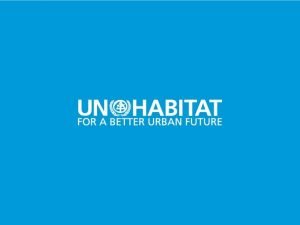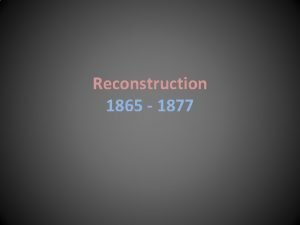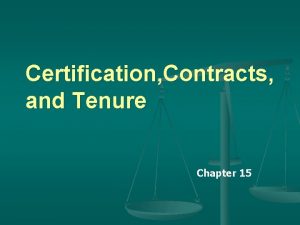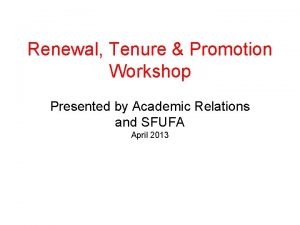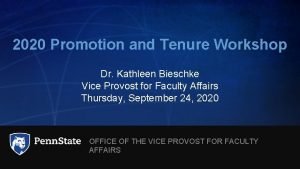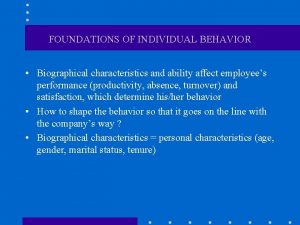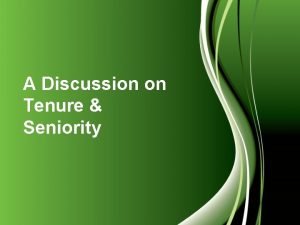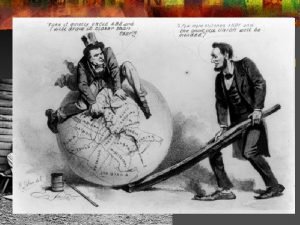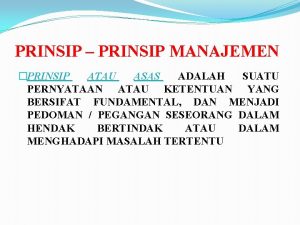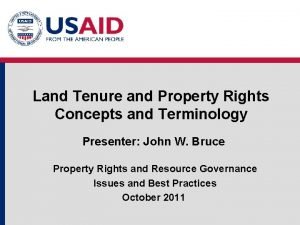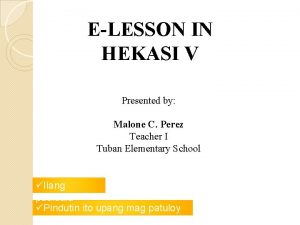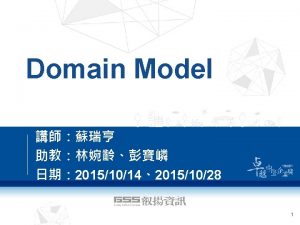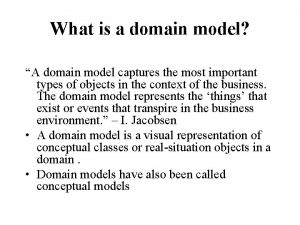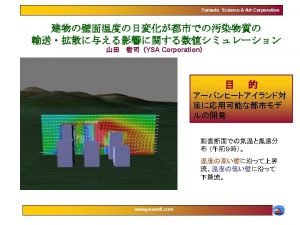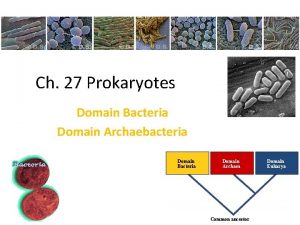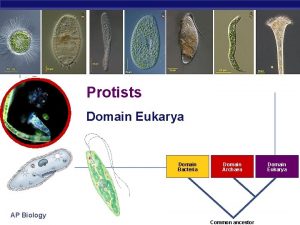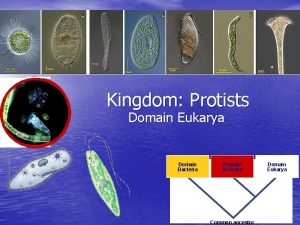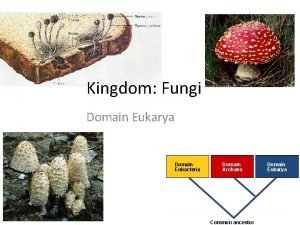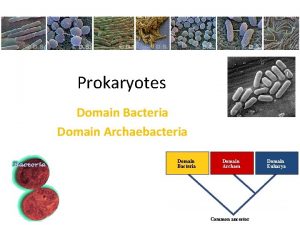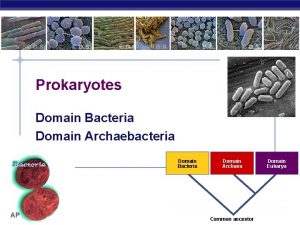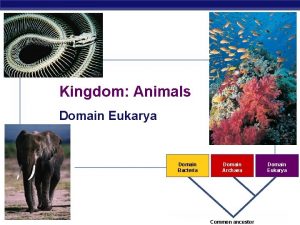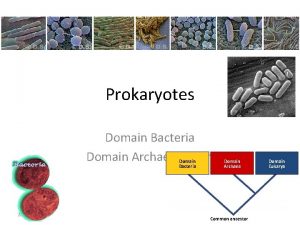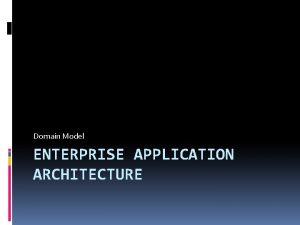1 1 1 Social Tenure Domain Model A


















- Slides: 18

1 1 1

Social Tenure Domain Model A Pro-Poor Land Information System ‘Secure Land Property Rights for All’ 2 2

Outline of Presentation • • • 3 3 Land Challenges and GLTN Why STDM? What is STDM? Involved Partners STDM Pilot in Uganda – Initial Results Key Lessons Next Steps

The Global Land Challenges • Only 30 % cadastral coverage (versus 70% tenures off register) – Need to secure tenure ASAP to all citizens. • Only 2 -3% ownership by women – how to increase? • Dealing with the affordability issue: how to modernise systems in a pro-poor way? • Complexity of land rights, claims, and records: Need to have new forms of land administration and records systems. Key Challenge for Policy Makers and Land Administrators: How to support various tenure types & systems to enable land reform and secure land property rights for all? 4 4

The Global Land Tool Network was established to address these challenges! • Coalition of 63 international partners • Focuses on security of tenure and development of land tools • Promotes good land governance and continuum of land rights 5 5

Continuum of Land Rights Paradigm Shift WILL REQUIRE STDM as one of the tools TO SUPPOR T Continuum of recording, technology, accuracy, rights, etc. 6 6

Why STDM? • It can facilitate the recording of all forms of land rights and claims (e. g. slums, customary, overlaps, etc. ) • Based on open and free software packages – It is affordable and scaleable • Based on global standard – It can be shared • Can complement other tools and can be used for different purposes and context – It is flexible and multi-purpose • Will not require highly skilled professionals to operate – It is simple to use • Promotes equity, participation, transparency, efficiency, sustainability and affordability 7 7

What is STDM? Christian Lemmen, 2012 8 8

Involved Partners Development Partners: • International Institute for Geo-Information • International Federation of Surveyors (FIG) • Land professionals • UN-Habitat • Sida, Norway, Cities Alliance Implementation Partners: • World Bank (rural areas in Ethiopia) • Slum Dwellers International (slums in Uganda) • National and local authorities (Uganda) • Pamoja Trust/ Ministry of Housing – Kenya • Mount Kenya Project 9 9

STDM Pilot in Uganda – Initial Results OBJECTIVES: 1. To address the land information requirements of the urban poor 2. To build capacity in the use and application of land information systems 3. To create dialogues between communities & authorities 10 10

The Inclusive Process 11 11

Initial Results 12 12

Priority Community Projects Bufumbo Project Electricity Garbage Disposal Water Road and Drainage Mission Numbers 38 20 17 17 Project Electricity Water Numbers 217 112 Health Centre 108 Combined 13 13 Project Electricity Numbers 256 Water 129 Health Centre 109

Tenure Information 1. How many structure owners, tenants etc. ? What are the tenure status and types? And where are they? 14 14

Key Lessons • Partnership is important for STDM implementation • STDM – from concept to implementation; it is technically sound, has multiple usage and simple to use • Combination of pro-poor land tools and approaches is doable, effective and useful • Ownership of the process and organizational capacity of the community and authorities are important • Capacity development is a catalyst for sustainability; experience opens up scaling up opportunities • Pro-poor solutions have huge potential to impact on the lives of the poor 15 15

Next Steps • Continue capacity development and technical assistance to Uganda • Continue dialogue with SDI and Cities Alliance on up-scaling • STDM implementation in Kenya (Mt. Kenya, Pamoja Trust) • Explore opportunities for STDM within UNHabitat (e. g. DRC, Haiti, etc. ) • STDM further testing and implementation in other context (e. g. customary, planning, climate change, slum upgrading, safety monitoring, etc. ) • Further improvement of STDM (e. g. FIG review, feedback from users, etc. ) • Release of the software in June 2014 16 16

Social Tenure Domain Model A Pro-Poor Land Information System ‘Secure Land Property Rights for All’ 17 17

THANK YOU For further information: Visit: www. gltn. net Become active in the partnership! Participate in tool development! 18 18
 Social tenure domain model
Social tenure domain model Tenure of office act 1867
Tenure of office act 1867 What is tenure
What is tenure Toney v. fairbanks north star borough school district
Toney v. fairbanks north star borough school district Tenure at the time of renewal
Tenure at the time of renewal Tenure stream
Tenure stream Activity insight psu
Activity insight psu Biographical characteristic
Biographical characteristic Tenure seniority
Tenure seniority Scalawags def
Scalawags def Asas-asas manajemen menurut henry fayol
Asas-asas manajemen menurut henry fayol Ano ang land tenure reform law tagalog
Ano ang land tenure reform law tagalog Land tenure reform law
Land tenure reform law Programa ng mga pangulo
Programa ng mga pangulo Domain and range games
Domain and range games Z domain to frequency domain
Z domain to frequency domain Time domain and frequency domain
Time domain and frequency domain Roc in z transform
Roc in z transform Z transform derivation
Z transform derivation
